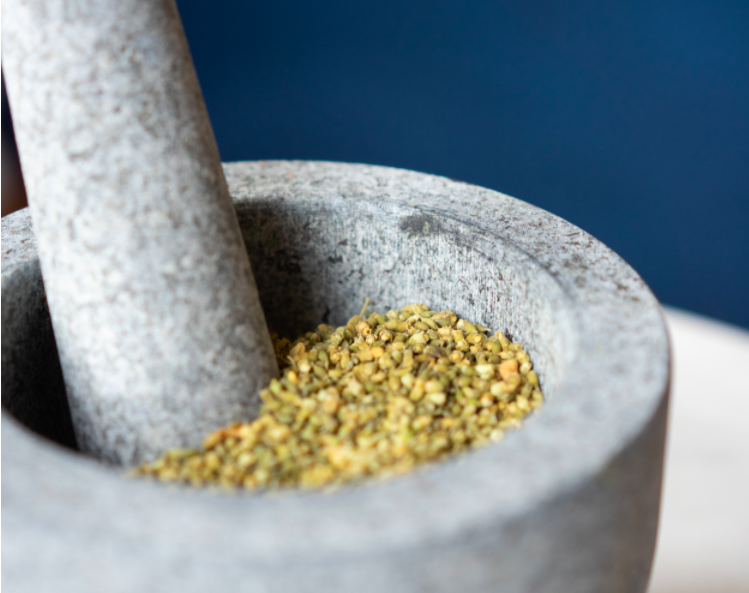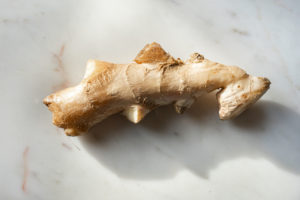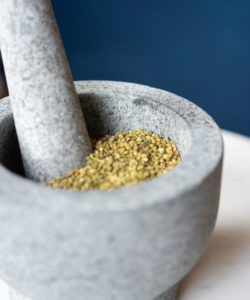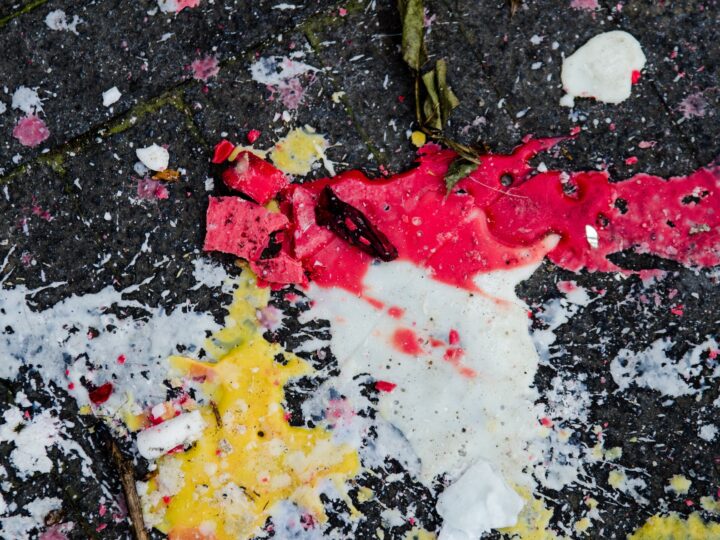TCM & AYURVEDA
Similarities & Differences

As long as there have been humans, we’ve been slowly learning more about the mind, body, and spirit and how best to care for it. Each part of the world has had its own processes, discoveries, and practices. The two most notable holistic approaches come from China (TCM) and India (Ayurveda). Get the full picture on how these two holistic medical practices stack up against one another- from foundational concepts to treatment plans.
Foundational Concepts
 There are certain foundational categories that both TCM and Ayurveda abide by, but the details of each vary slightly. One of the strongest similarities is the understanding that energy is the source of all life and flows within us through channels. Both practices believe that this energy must maintain a steady balance to flow properly, otherwise, it can get blocked and create problems. Concepts of the “essence of life” are similar between both as well. In Ayurveda, it is frequently referred to as Ojus while in TCM it’s called the congenital essence.
There are certain foundational categories that both TCM and Ayurveda abide by, but the details of each vary slightly. One of the strongest similarities is the understanding that energy is the source of all life and flows within us through channels. Both practices believe that this energy must maintain a steady balance to flow properly, otherwise, it can get blocked and create problems. Concepts of the “essence of life” are similar between both as well. In Ayurveda, it is frequently referred to as Ojus while in TCM it’s called the congenital essence.
There are other alignments even when you look at more specific concepts. Both practices have distinct sets of 5 Elements, tastes, and temperatures. In the 5 Elements, both contain water, fire, and earth, but TCM includes metal and wood while Ayurveda follows ether and air. The tastes are exactly the same, including sweet, sour, salty, bitter, and pungent, but Ayurveda adds a sixth taste of astringent. Temperatures are the most varied between the two. In TCM there’s a wide spectrum; from hot, warm, neutral, cool, and cold each of which has a fixed correspondence to taste and physical effects. Ayurveda temperatures are based around warm and cool and change based on the situation, feeling, and combination with other influences.
Methods of Diagnoses
The process of diagnosing a disease or condition in both TCM and Ayurveda is very serious and looks beyond the outer symptoms. Unlike Western, modern medicine that seeks to treat only the symptoms, the goal of both these holistic approaches to diagnosis is to find the root cause and focus on treating that instead. Both TCM and Ayurveda check the tongue, pulse, looking, and asking methods.
 When checking the tongue, using a body map on the tongue that is nearly identical, TCM is noted to give greater value to the findings there and evaluate many more elements than in Ayurveda. The pulse is important in both practices but almost everything about how to assess and interpret the pulse is different. In Ayurveda, pulse is checked when assessing someone’s constitution and which dosha may be vitiating. In TCM there are many different types of pulse and each can correlate to specific diseases. When it comes to using modern medical tests in conjunction with the holistic treatments, the suggested involvement can vary based on the practitioner. We always recommend you communicate with both your holistic and medical teams to find the treatment plans best for you.
When checking the tongue, using a body map on the tongue that is nearly identical, TCM is noted to give greater value to the findings there and evaluate many more elements than in Ayurveda. The pulse is important in both practices but almost everything about how to assess and interpret the pulse is different. In Ayurveda, pulse is checked when assessing someone’s constitution and which dosha may be vitiating. In TCM there are many different types of pulse and each can correlate to specific diseases. When it comes to using modern medical tests in conjunction with the holistic treatments, the suggested involvement can vary based on the practitioner. We always recommend you communicate with both your holistic and medical teams to find the treatment plans best for you.
Herbal Treatments
 Both TCM and Ayurveda harness the power of herbal remedies, using parts of plants, animals, minerals, and stones in various treatments. This can include the flowers, roots, bark, leaves, shells, bone, venom, and more. These elements can be processed into many forms; powders, decoctions, topical pastes or creams, capsules, and more. TCM herbs are more commonly cooked, dried, ground, or altered by pao zhi techniques like wine frying or charring in some way before use. In Ayurveda, however, you’d be more likely to also see options involving the fresh, raw herb. However Ayurveda is famous for processing herbal formulas involving as many as 40 ingredients, some with multiple years of processing in order to detoxify otherwise poisonous materials
Both TCM and Ayurveda harness the power of herbal remedies, using parts of plants, animals, minerals, and stones in various treatments. This can include the flowers, roots, bark, leaves, shells, bone, venom, and more. These elements can be processed into many forms; powders, decoctions, topical pastes or creams, capsules, and more. TCM herbs are more commonly cooked, dried, ground, or altered by pao zhi techniques like wine frying or charring in some way before use. In Ayurveda, however, you’d be more likely to also see options involving the fresh, raw herb. However Ayurveda is famous for processing herbal formulas involving as many as 40 ingredients, some with multiple years of processing in order to detoxify otherwise poisonous materials
One big difference between TCM and Ayurveda is the use of internal oleation. Despite the fancy word, what these means is essentially the intake of ghee, which is an ancient clarified butter from India. Ghee is taken prior to some Ayurvedic treatments. This substance isn’t used in TCM and there isn’t really a similar practice in place.
Physical Treatments
 Hands-on physical healing treatments are very common in both TCM and Ayurveda. The knowledge of specific points on the body that are central to energy is present in both practices which can be used for various treatments. Acupressure and acupuncture have also been used in both. Massage is used in both, but the techniques are quite different. Ayurvedic massage relies on the use of oils for therapeutic treatment while TCM’s massage is more about this pressure and movements involved.
Hands-on physical healing treatments are very common in both TCM and Ayurveda. The knowledge of specific points on the body that are central to energy is present in both practices which can be used for various treatments. Acupressure and acupuncture have also been used in both. Massage is used in both, but the techniques are quite different. Ayurvedic massage relies on the use of oils for therapeutic treatment while TCM’s massage is more about this pressure and movements involved.
Beyond those foundational elements of physical treatments, TCM and Ayurveda are actually quite different. Common treatments in TCM include acupuncture, cupping, moxibustion, gua sha, or auricular acupuncture with seeds. On the other hand, in Ayurveda, you’re more likely to see treatments like medicated oil, fermented liquid, or medicated buttermilk mixtures poured over the body; spreading oils or ghee on the face; medicated smoking; or intentional sweating.
Diet and Nutrition
 When it comes to diet and nutrition, most practitioners of holistic medicine will often suggest changes or additions you can make at home. TCM and Ayurveda both view food as a healing element of life and often look to poor food choices as the root of many conditions. While specific recommendations will always vary person-to-person, there are some foundational food elements in each practice.
When it comes to diet and nutrition, most practitioners of holistic medicine will often suggest changes or additions you can make at home. TCM and Ayurveda both view food as a healing element of life and often look to poor food choices as the root of many conditions. While specific recommendations will always vary person-to-person, there are some foundational food elements in each practice.
Ayurveda tends to lean towards a heavy influence of ghee, dairy, and a long list of spices. TCM is more in the cooked greens, and rice camp, and a mix of spices and herbs. Many believe that this is due to the landscape and agriculture of India and China, the countries in which the practices originated. Another notable difference is the emphasis placed on the concept of fasting. In Ayurveda it’s quite popular, while much less commonly prescribed in TCM.
At the end of the day, know this: both TCM and Ayurveda are holistic practices designed to treat patients naturally with a well-rounded view of the care needed to promote long-term health and maintenance. Whether you participate in one, or both, be sure to communicate with both your Eastern and Western medical teams to ensure your treatment plan is right for you.
Are you on Team TCM or Team Ayurveda? Let us know!
Newer
How To Treat Your Eczema With Eastern Medicine
Older
Eastern Medicine Tips For Women In Their 30's
Comments (0)
Leave a reply
You must be logged in to post a comment.




